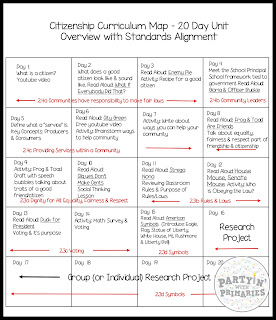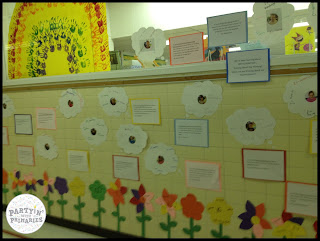One of my favorite book series for primary aged children is Frog and Toad. The characters are kind but silly, and always seem to be learning some type of lesson that the kids can pick up on.
Frog and Toad are Friends by Arnold Lobel leads to excellent discussions about equality, fairness and respect. These three concepts are a large part of friendship and citizenship, and this book models it in a way that is comprehensible for seven year old kids! After reading the book aloud, I like to engage the students in a whole group discussion about the ways Frog and Toad were kind friends to each other in the book. I lead with the example of Frog writing a letter to Toad when he felt lonely. We talk about how it would feel to receive a letter if we were feeling lonely -- most kiddos agree that it would make them feel better.
Then the children pair off and talk about ways they can be good friends to each other. After two minutes, we come back as a large group and share our answers. In the past my students have come up with answers like: "Ask a friend to play at recess that looks lonely." "Share your toys at recess." "Tell a friend you like their shirt." It is amazing how quickly they're able to make connections to their own lives.
The next day, we do a cute "craftivity." We review how Frog and Toad were kind friends and how that connects to their own lives. We examine the ideas they came up with the previous day and then they create their own Frogs and Toads with speech bubbles explaining how each individual is a good friend. They always look adorable in the end... they're great to decorate the classroom or hallway... AND serve as a reminder of how to be kind friends/good citizens.
Once they have grasped the concept of being good friends, they can then move on to the more broad concept of being a good citizen. Another day, we spend time thinking about what it means to help in our own community, and ways in which we can do so. I don't know about you, but my kids always love watching books on the smartboard.
It really isn't anything different than a read-aloud but it just spices things up a bit. So we "watch" the book City Green by DyAnne DiSalvo-Ryan. (You can click on the image below for the link to the read-aloud.)
When we finish watching City Green, a book about a girl that works to make her city beautiful, we brainstorm ways that we can help our community.
After the minds of the students have been primed, they head back to their seats to start making their own lists of ways to help in their community. Some of their ideas were quite inspiring! I just love how their little brains work!
We also started a class collection of canned goods for a local food pantry. We kept a bag in the front of our classroom for the kids to bring in items from home to donate. Our goal was to fill a brown grocery bag... and we did! It was heart warming to see how excited the children got as we worked to fill a bag of food for those in need.
If you found these ideas helpful, check out the Interdisciplinary Citizenship Unit written by Lauren's Learning Corner and myself.
This 20 day unit is aligned to the Common Core Standards and includes activities, read alouds and projects similar to those you read about above.
I hope you found a few ideas that will be useful in your classroom! Thanks for stopping by and keep up the good work!






















































